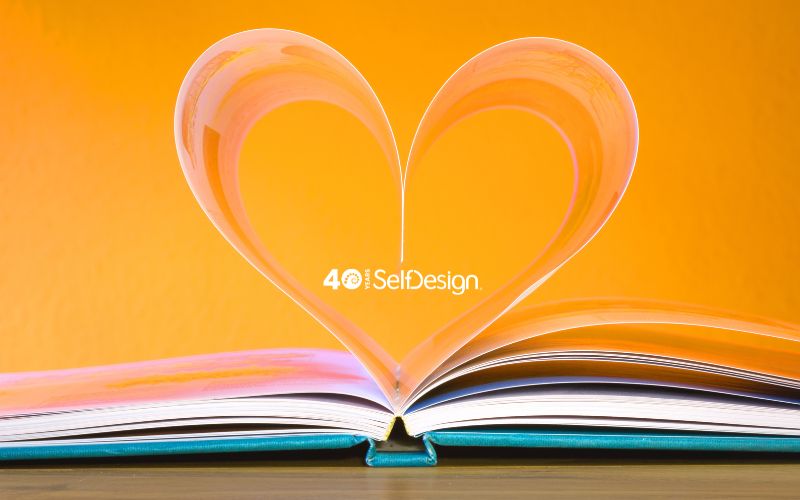Grades 10 to 12 at SelfDesign are flexible and customizable, in keeping with our learner-centered approach to learning. We provide a comprehensive, theme- and relationship-based approach to high school that aligns fully with the BC Ministry of Education and Child Care’s graduation program.
 However, to meet Ministry requirements, grades 10 to 12 are somewhat more structured than earlier years. Learners collaborate directly and regularly with their educators, with support from parents as needed, and take on more responsibility for their own learning. The workload also increases, and deadlines become important.
However, to meet Ministry requirements, grades 10 to 12 are somewhat more structured than earlier years. Learners collaborate directly and regularly with their educators, with support from parents as needed, and take on more responsibility for their own learning. The workload also increases, and deadlines become important.
Some learners find it a lot to manage.
“The higher grades are pretty fast paced,” says SelfDesign Educational Coordinator Kathy Rollheiser. “There’s a learning challenge due every week. Many people with learning difficulties, and even those without learning difficulties, are challenged by that kind of timeframe.”
For learners who may be struggling to stay organized to keep up with their regular weekly grade 10 to 12 coursework, we provide the online Learning Support Services (LSS) Resource Room where they can go for extra support.
A supportive learning environment
“The LSS Resource Room has been a godsend for my learner,” one learning consultant shared with Kathy. “He would not be able to function without that additional support.”
“The resource room is there to help them stay current with the work that SelfDesign expects in grades 10 to 12,” Kathy says. “Except in rare cases, it doesn’t provide general tutoring. The goal is to help learners finish their challenges and stay up to date.”
 For example, if a learner who has difficulties with reading comes to the resource room, the education assistants who run the room might help by reading some of the work to them and by helping the learner express an answer.
For example, if a learner who has difficulties with reading comes to the resource room, the education assistants who run the room might help by reading some of the work to them and by helping the learner express an answer.
Or if a learner is having difficulty with a math-related challenge, the assistant would make sure the learner understands the questions. A mini math lesson may be provided if the learner is missing a math concept that’s needed to finish that challenge.
The focus, however, Kathy says, is on helping the learner finish the learning challenge they’re working on.
“Sometimes the learners are looking for emotional support,” she says. “They may have anxiety or they’re worried that they’re going to do something wrong. Even just having somebody there, saying, ‘You’re doing great,” is enough to take the edge off and let the learner finish the challenge.”
“We were on the verge of hiring a tutor when we were made aware of the LSS Resource Room, and it was exactly what we needed,” SelfDesign parent Eryn says. “The LSS team has given my daughter the support to understand and complete assignments as she needs, without having to wait, a virtual room that she can silently work away in, and get individual assistance as she needs. They have been amazing at coaching, instructing and mentoring, academically and with assignment planning strategies. I am relieved and thrilled for the help my daughter has received from the resource room.”
One SelfDesign learning consultant says that many of their learners have used the resources room. “I’ve seen my learners blossom with independence, self-confidence, and success and growth with completing challenges for their school work. As a learning consultant, I feel very included as part of a team that supports each learner where they are at!”
Serving a broad learner population
Open for 16 hours each week, the resource room is available to learners in grades 9 to 12 enrolled in SelfDesign’s general program, or who have been diagnosed with more commonly encountered learning difficulties, who have been referred to the resource room. (Learners who have been diagnosed with more challenging, less common learning needs receive funding to access other learning supports.)
 Learners, parents or guardians can request a referral through the learner’s learning consultant if they are struggling or feel they would benefit from extra support. Learning consultants may also refer a learner to the room if they see the learner is having trouble keeping up.
Learners, parents or guardians can request a referral through the learner’s learning consultant if they are struggling or feel they would benefit from extra support. Learning consultants may also refer a learner to the room if they see the learner is having trouble keeping up.
Since 2020, when it was first offered, the number of learners using the resource room has grown. Up to five or six learners come by for support during each drop-in session. Some learners stop by for one or two hours every week for several weeks in a row. Some learners attend the drop-in sessions during their school work time whether they need support or not. There is always an education assistant there to ask for help if the learners need it.
Learners can also book one-on-one sessions with the resource room education assistants.
Beginning this learning year, learners in grade 9 can also ask to be referred to the resource room for drop-in support.
“Most learners have been doing interest-based learning for a long time that might not include doing a lot of writing,” Kathy says. “But in grade 10, they have to be able to do some writing. So our grade nine resource room focuses on making sure these learners are aware of what they would need to have in place when they begin grade 10, as well as how the learning platform works and how to submit assignments.”
The grade 9 to 12 resource room has been well used and well received by learners, families and educators.
“Attending both math- and English-focused LSS resources rooms has helped me organize myself, keep track of my weekly workflow, and complete challenging assignments,” one of our grade 12 learners says. “Through LSS support, I have notably improved my confidence levels as a student, improved my productivity, and avoided burnout due to stress and anxiety.”
“The learners are happy the resource room is there,” Kathy says. “The parents are over the moon, and learning consultants tell us it’s making a big difference in their learners’ experience.”
Learn more about supporting learners at SelfDesign® Learning Community:
- The role of the learning consultant at SelfDesign Learning Community: Supporting the learner
- What you need to consider when enrolling your child
- How best to support a learner
- How to ensure your child has the specialized learning supports they need once they enrol
- Family Services: There to support families and learners on their learning journey
Read about the transition to grades 10 to 12 at SelfDesign:







